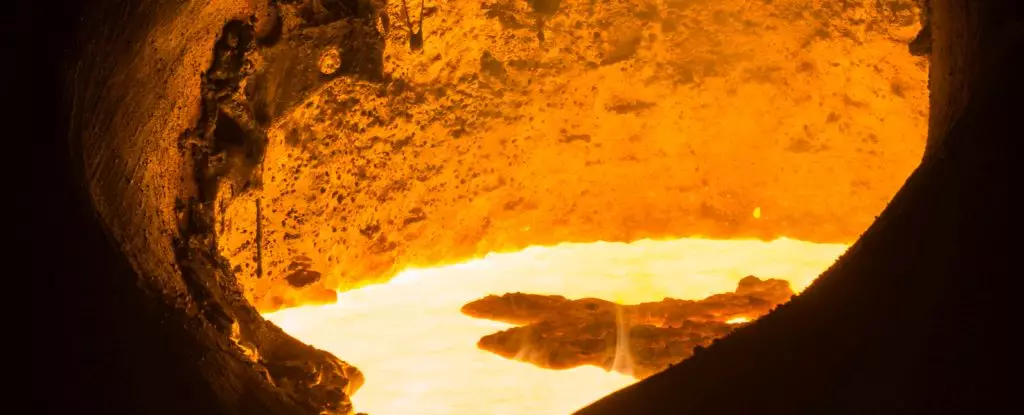In a remarkable twist in our understanding of planetary geology, scientists have unearthed evidence that the Earth’s core is more than just a molten mass of iron; it is a veritable treasure trove of precious metals, particularly gold. A recent study led by geochemist Nils Messling at Göttingen University unveils a fantastic revelation: gold and other heavy metals are leaking from the core through the mantle and infiltrating our planet’s crust. This striking discovery sparks questions about the very nature of Earth’s formation and its metallic bounty, challenging long-held assumptions about where our planet’s wealth actually resides.
This groundbreaking knowledge emerged from the analysis of isotopes, specifically ruthenium, found in volcanic rock sampled from the Hawaiian islands. Unlike the common perception of Earth’s crust simply as a surface layer, this research suggests that our planet possesses a hidden reservoir of material that has been seeping over eons. As Messling tantalizingly remarked, “We had literally struck gold!” This metaphor resonates profoundly as it epitomizes the duality of Earth: an apparent scarcity of gold on the surface, contrasted by a monumental store hidden beneath.
The Iron Catastrophe and Its Aftermath
To comprehend the sheer magnitude of this discovery, one must delve into the history of our planet’s formation. During the infancy of Earth, a catastrophic event, widely referred to as the “iron catastrophe,” caused heavy elements to sink deep into the nascent planet. This primordial process sequestered metals, including gold, deep within the core. Over billions of years, meteor bombardments might have introduced additional gold deposits to the crust, yet the core remained the ultimate reservoir — a hoard of wealth hidden in plain sight.
The reality that more than 99% of Earth’s gold resides in its core is both incredible and sobering. The staggering estimate suggests that, if all this metal were to surface, it could blanket the land in a 50-centimeter layer of gold. Such a lavish depiction serves to underline the disparity between our quest for resources and the bountiful treasures that our planet quietly conceals. It beckons a new paradigm for how we view the Earth—not just as a source of resources, but as a living system with a rich geological history waiting to be explored.
Isotope Detective Work
Messling’s team employed sophisticated techniques to discern differences in ruthenium isotopes, discovering that higher concentrations of ruthenium-100, a variant originating from the core, could be found in volcanic samples. This innovation signals a new frontier in geochemical analysis. The ability to identify these isotopic differences represents a leap forward in unraveling Earth’s complex geological narratives. It offers clues not only about our own planet’s inner workings but also about other rocky planets that may contain similar treasures.
The implications of such findings are profound. If the isotopes of gold and other siderophile elements are indeed leaking from the core, it raises questions about the interplay of materials within Earth and the processes that govern geological activity. This layered understanding of Earth’s geochemical mechanisms reminds us of the interconnectedness of our planet’s components, emphasizing that geology is more than just a static layer of rocks; it is a dynamic and ever-evolving system.
A Call to Rethink Resource Management
The unveiling of this hidden reservoir of gold urges us to reconsider our approach to resource management. Faced with mounting environmental challenges and the dire consequences of mining operations, society must think innovatively about how to utilize and preserve our remaining geological resources. As we strive for sustainability, the revelation of gold in our core should incentivize a more thoughtful approach—one that balances the desire for exploration and discovery with respect for our planet’s integrity.
This newfound understanding of Earth’s core serves as a reminder that we are mere custodians of this planet. It grows increasingly critical that we honor the geological processes that occurred before our time and ensure their survival for generations to come. In an era grappling with resource depletion, the knowledge of hidden wealth within the Earth should inspire us to cultivate a deeper respect for the planet and rethink our relationship with its treasures. The resources contained in the depths of the Earth are not merely commodities; they represent a complex interplay of processes that sustain life as we know it.

